I am a firm believer in growing your own medicinal herbs and I have quite a few in my garden. But what if you don’t have garden space or if your garden is already full growing crops to feed your family? Most medicinal herbs will grow very well in containers placed on windowsills or in other sunny locations. I even have a few containers along the side of my driveway.
Growing Herbs in Containers
Not all containers are created equal, although if you purchase a commercial pot designed for this purpose, you’ll probably do ok.
My three main guidelines are:
- use a large container with room for roots;
- make sure it has drainage holes;
- choose a light reflective color (dark colors absorb heat and dry out the soil).
Water is critical when growing plants in containers. Plants need a balance of water. Not too much or their roots will rot, but usually enough to keep the soil moist at all times. This is accomplished by using rocks or other porous materials on the bottom to provide good drainage and regular waterings.
The soil in a container dries out much quicker than the ground soil and must be watered regularly. Daily watering is needed in the heat of summer, possibly even twice daily if your pot is small or the sun is brutally hot.
Use a sterilized potting soil to start your seeds and fill your pots, if possible. This will cut down on weeds and provide a fertile growing medium for the plants. Compost or a mixture of black earth and peat moss is also fine. Water the soil thoroughly and let it drain before planting your seeds or plants.
How to Grow Yarrow
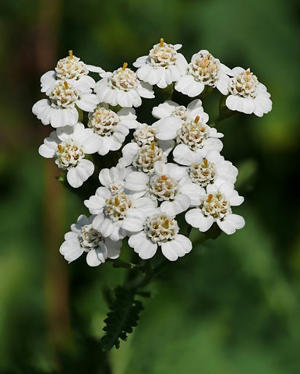 Yarrow is perennial and a member of the daisy family. It is great for your windowsill or container garden. The plant is extremely hardy and will withstand cold weather easily, once established. It needs a large garden container, 1 gallon or larger is best.
Yarrow is perennial and a member of the daisy family. It is great for your windowsill or container garden. The plant is extremely hardy and will withstand cold weather easily, once established. It needs a large garden container, 1 gallon or larger is best.
Yarrow can be grown readily from seed. It needs light to germinate, so place the pots in a warm, bright spot. Give them up to three weeks to germinate. Keep the soil moist, but not wet.
The plant will grow in any standard potting mix. Add in some compost or slow-release fertilizer and they will do fine.
Yarrow likes the sun, but it will do well in partial shade also. It is best in east or west facing locations and makes a good companion plant for your vegetable garden. It repels pests while attracting insects that prey on common garden pests. When mature, yarrow will reach 1.5 to 3.5 feet tall and will die back over the winter.
How to Grow Peppermint
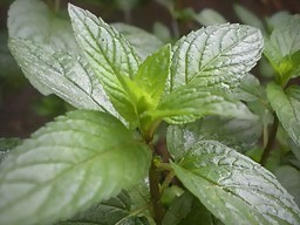 Peppermint is a perfect choice for window boxes or windowsill containers. It grows quickly, trails nicely, and will spread quickly if you let it. I grow all my mints in containers for this reason. Otherwise, it would take over the garden.
Peppermint is a perfect choice for window boxes or windowsill containers. It grows quickly, trails nicely, and will spread quickly if you let it. I grow all my mints in containers for this reason. Otherwise, it would take over the garden.
You can sow peppermint seeds in your pot. Peppermint likes water, but not wet roots, so put it in a soil that drains well. It likes rich soil and plenty of sun with partial shade in the afternoon.
I like to plant a large pot of peppermint because I love the flavor in foods and teas, but it doesn’t need a deep pot because the roots are fairly shallow growing. It will do well in any container as long as it is well-drained and the soil stays moist.
How to Grow Wild Lettuce
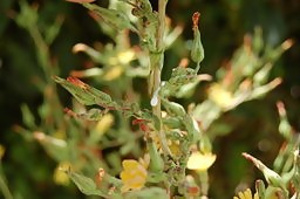 Wild lettuce is a tall plant, growing up to 6.5 feet at maturity, so you’re going to want a large, stout pot for this one. It is a biennial, taking two full years to mature and produce seed. It needs full sun or partial shade and rich moist soil with a pH of 7.
Wild lettuce is a tall plant, growing up to 6.5 feet at maturity, so you’re going to want a large, stout pot for this one. It is a biennial, taking two full years to mature and produce seed. It needs full sun or partial shade and rich moist soil with a pH of 7.
Wild lettuce seeds are available online and unless you have a nearby source, this is probably the best way to obtain them. Soak the seeds for a half-hour before sowing, then sow on the surface of the soil and do not cover them. Wild lettuce seeds need light to germinate. Keep the soil moist, but not wet. The seedlings will most likely die if the soil dries out at this early stage.
I start my wild lettuce indoors on a table in the early spring. I place a plastic bag over the pot to act as a miniature greenhouse and check the moisture level daily. Remove the plastic as soon as they sprout – up to 4 weeks later. Wait until the last frost date has passed before leaving them outside.
How to Grow Chamomile
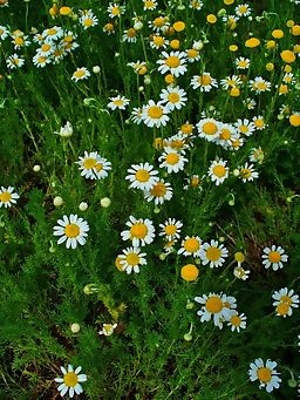 Chamomile is a pretty plant that you’ll be happy to have on your windowsill. It produces daisy-like flowers throughout the summer. It also produces a multitude of seeds, so it will take over an area over time if you plant it in the garden.
Chamomile is a pretty plant that you’ll be happy to have on your windowsill. It produces daisy-like flowers throughout the summer. It also produces a multitude of seeds, so it will take over an area over time if you plant it in the garden.
Roman chamomile (Matricaria recutita) will grow compactly in a small container. German Chamomile (Matricaria chamomilla) needs more space, so use a large container. Chamomile needs good drainage, so use a loose well-drained potting mixture and put it into a pot with a drainage hole.
Sow seeds on the surface and leave them exposed. Chamomile needs light to germinate. Once established the plants need very little care beyond water and monthly feeding.
Move the pot out of the sun when temperatures climb above 90 F and bring indoors when a frost is predicted.
Related: 79 Edible Flowers in North America (with Pictures)
How to Grow Echinacea
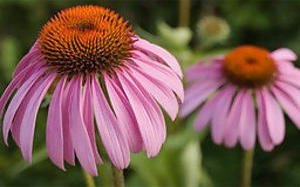 Echinacea grows slowly from seeds, taking several years to flower.
Echinacea grows slowly from seeds, taking several years to flower.
Place the container in full or partial sun.
The plants are drought tolerant once they are established, but don’t allow the soil to completely dry out.
How to Grow Calendula
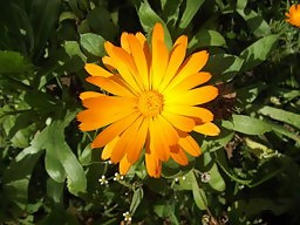 Calendula is readily available in garden centers as a plant or seeds. I prefer to grow it from seeds since it grows easily. I sow the seeds directly into the growing pot.
Calendula is readily available in garden centers as a plant or seeds. I prefer to grow it from seeds since it grows easily. I sow the seeds directly into the growing pot.
Calendula prefers well-drained, organic potting soil or garden soil mixed with well-rotted compost. Place the pot in a full sun location and keep the soil moist but not wet. You can plant calendula in the fall for flowers in the spring, or in the spring for a long-lasting burst of color all summer.
Related: 21 Wild Edibles You Can Find in Urban Areas
How to Grow Comfrey
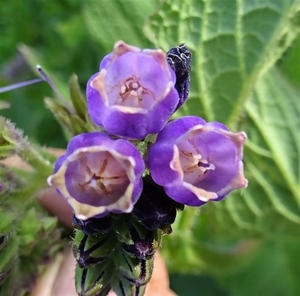 Comfrey takes a long time to germinate (up to 20 weeks). The comfrey plant has a deep root system, so it needs a deep pot. It is cold hardy in zones 3 to 9. In colder areas, it will die back in the winter, but the roots will survive and sprout again in the spring.
Comfrey takes a long time to germinate (up to 20 weeks). The comfrey plant has a deep root system, so it needs a deep pot. It is cold hardy in zones 3 to 9. In colder areas, it will die back in the winter, but the roots will survive and sprout again in the spring.
Comfrey prefers full sun or partial shade. It likes a soil pH of 6.0 to 7.0 that is well-drained and fertile. It needs plenty of water and high nitrogen fertilizer.
When choosing a pot for comfrey, look for a large, deep pot that won’t tip over in a wind. The plant has a deep growing taproot and grows to reach five feet or more.
You may also like:
 The Only 6 Seeds You Need to Stockpile for a Crisis
The Only 6 Seeds You Need to Stockpile for a Crisis
The Berry That Is Illegal To Grow, But Perfectly Fine To Forage (Video)

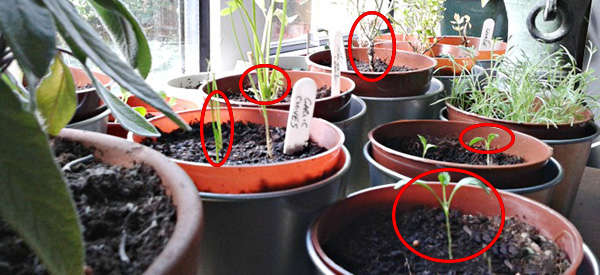













I found this article to be very interesting and well done. I do think that some people might benefit from the added information regarding the potential medicinal uses of these plants however, and that was not addressed in this article.
Good article, but limited. First, I never grow my medicinal herbs near the street or by a driveway. The pollution from cars is bad. Also, most herbs don’t like fertilizer. Fertilizer stimulates leaf production. We want the plants to focus on their medicinal qualities. Comfrey is a wonderful plant but can be very invasive. Even a small piece of root will grow, and you won’t be able to kill it. Basically, herbs thrive on benign neglect. They don’t appreciate loving fussing like roses do.
Not to be critical of the article, but a pot that will accommodate a 5-foot tap root is not exactly windowsill compatible. It sounds more like a patio type of plant or a plant that should be in the ground.
is there any medicinal herb that one could grow in arizona? (southern arizona)
I did find the article helpful but I would have liked to see a teeny bit about the uses of these herbs.
Dear still learning, good for you to be thinking about these things. You can grow all kinds of herbs in Arizona. Lots of herbs love hot dry climates. The herbs that are natural to the hillsides of Greece and Italy will love Arizona. Rosemary, Basil, Oregano, Thyme, and even Tarragon should do well. Herbs don’t like to be fertilized, as it produces more leaf growth, but less flavor. Herbs thrive on. benign neglect. They appreciate your love and feel it.
As for uses of the herbs, there are so many, Wonderful books are out there, including the new book that Prepper is just making available. Get at least one of these books and study it. All this information is available to you. You have to reach out and take it.
Joy on your journey, Still learning, you ar definitely on the right track.
Love, Pam